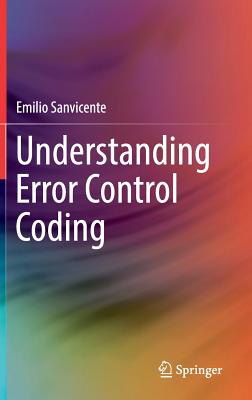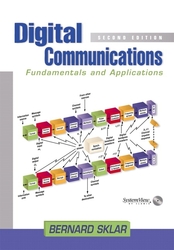Understanding Error Control Coding
暫譯: 理解錯誤控制編碼
Sanvicente, Emilio
- 出版商: Springer
- 出版日期: 2019-05-02
- 售價: $6,780
- 貴賓價: 9.5 折 $6,441
- 語言: 英文
- 頁數: 311
- 裝訂: Hardcover - also called cloth, retail trade, or trade
- ISBN: 3030058395
- ISBN-13: 9783030058395
-
相關分類:
數位訊號處理 Dsp
海外代購書籍(需單獨結帳)
商品描述
This book is addressed to newcomers to error control coding (ECC), making the subject easy to understand and to apply in a variety of cases. The book begins by presenting in a detailed, step-by-step manner the plethora of parts an ECC system has and the way they interact to achieve the performance required. Contrary to the more abstract and formal approach followed in most books on this topic, this book is unique in that all of the concepts, methods, techniques and algorithms are introduced by way of examples. Thus, the book is almost a workbook, and therefore very suitable for self-study. Readers are encouraged to take an active role while reading, performing calculations as chapters' progress. Moreover, to reinforce the learning process, many of the topics introduced in the book (Galois fields, Extended Hamming codes, Reed-Solomon codes, interleaving, erasure correction, etc.) are presented in various parts of the book in different ways or contexts.
- Offers a practical guide to error control coding, accessible to readers with varying backgrounds;
- Provides newcomers with a sound foundation in error control coding, using a select few topics considered by the author fundamental from an engineering point of view;
- Presents material with minimal mathematics;
- Motivates carefully concepts, methods and algorithms making clear the idea behind the conditions for the code to work.
商品描述(中文翻譯)
這本書是針對錯誤控制編碼(Error Control Coding, ECC)的新手,旨在使這個主題易於理解並能夠應用於各種情況。書中以詳細的逐步方式介紹了ECC系統的眾多組成部分及其互動方式,以達到所需的性能。與大多數關於此主題的書籍所採用的較為抽象和正式的方法不同,本書的獨特之處在於所有概念、方法、技術和演算法都是通過範例來介紹的。因此,這本書幾乎可以視為一本工作手冊,非常適合自學。鼓勵讀者在閱讀時積極參與,隨著章節的進展進行計算。此外,為了加強學習過程,書中介紹的許多主題(如Galois域、擴展Hamming碼、Reed-Solomon碼、交錯、刪除修正等)在書中的不同部分以不同的方式或上下文呈現。
- 提供一個實用的錯誤控制編碼指南,適合背景各異的讀者;
- 為新手提供堅實的錯誤控制編碼基礎,使用作者認為從工程角度看來基本的少數主題;
- 以最少的數學內容呈現材料;
- 精心闡述概念、方法和演算法,清楚說明編碼運作條件背後的理念。
作者簡介
After obtaining a Master's Degree from New York University in 1971 and a Ph.D. from Brown University in 1974, both in Electrical Engineering, Emilio Sanvicente was appointed as an assistant professor at the School of Telecommunication Engineering of the Polytechnic University of Catalonia (Barcelona, Spain). Ensuing a period of ten years of "toil and sweat", he became a full professor in 1984 and remained there until his retirement in 2011. During those years, he taught courses in a variety of subjects, from The Mathematics of Electrical Engineering, to Communication Networks, Information Theory and Coding, Digital Transmission and Cryptography. He also conducted research in those areas and carried out more than twenty projects for both private and government institutions.
作者簡介(中文翻譯)
在1971年獲得紐約大學的碩士學位,並於1974年獲得布朗大學的電機工程博士學位後,Emilio Sanvicente被任命為加泰羅尼亞理工大學(西班牙巴塞隆納)電信工程學院的助理教授。在經歷了十年的「辛勤工作與汗水」後,他於1984年晉升為正教授,並一直在該校任教直到2011年退休。在這些年中,他教授了多種科目的課程,從電機工程數學、通信網路、資訊理論與編碼、數位傳輸到密碼學。他還在這些領域進行研究,並為私營和政府機構執行了超過二十個項目。












